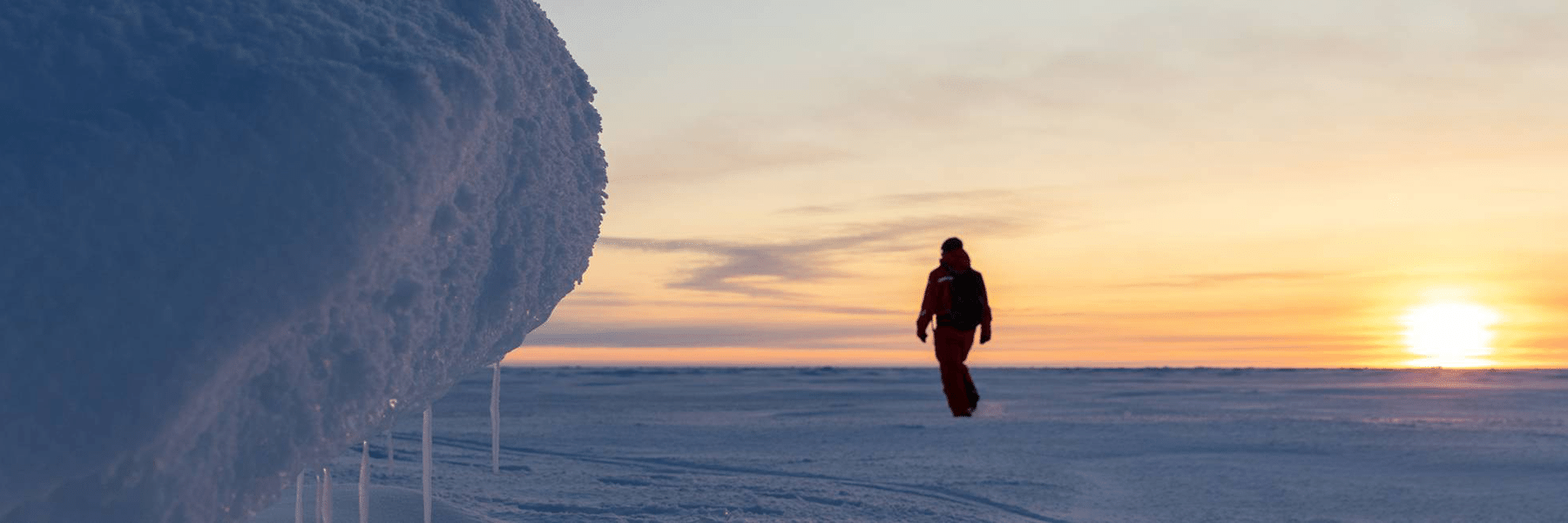Drifting with the sea ice to understand Arctic change: Overview papers from MOSAiC now available

Two years ago, hundreds of international scientists set off on the one-year Multidisciplinary drifting Observatory for the Study of Arctic Climate (MOSAiC) expedition, collecting unprecedented environmental datasets over a full annual cycle on the sea ice of the Central Arctic Ocean. CIRES and NOAA researchers at the the Physical Sciences Laboratory led/co-authored an article recently published in the journal Elementa: Science of the Anthropocene, which describes the Atmosphere program that was part of MOSAiC. Along with similar overview publications for the Sea Ice and Snow, and Physical Oceanography programs (also co-authored by CIRES/PSL researchers), this collection of papers highlights the cross-cutting observations and activities that were part of MOSAiC and will serve as the basis for a wide range of science that aims to understand the causes and consequences of the rapidly changing Arctic sea ice.
Important findings from the atmosphere paper include:- MOSAiC occurred during a record-high positive Arctic Oscillation Index in January through March, which is related to a particularly strong Polar Vortex around the Arctic at this time. This circulation pattern contributed to a record ozone hole in the Arctic stratosphere, and to particularly cold temperatures near the surface with persistent winds that pushed the sea ice and MOSAiC more quickly across the Arctic than expected.
- Observed the dynamic and thermodynamic influences of more than 20 Arctic cyclones, or storms, of various scales. Dynamically the researchers characterized in unprecedented detail the vertical wind structure and momentum transfer to the sea ice and ocean, leading to sea-ice movement and fracture. Thermodynamically, they examined the impacts of warm air masses moving into the central Arctic with associated clouds and snowfall that led to changes in sea ice temperature and mass budget.
- New year-round information has been gained on variability of atmospheric composition and aerosol populations in the Central Arctic. Importantly the observations give new insight into the relative influences of long-range transport versus local processes for determining the Central Arctic atmospheric composition and aerosol properties, which impact climate-relevant cycles (e.g., carbon cycle), clouds, and radiative balance.
- They also characterized the shifts in all terms of the surface energy balance that result from transitions between Arctic clear sky and cloudy states, with important implications for sea ice temperature, growth, and melt.
MOSAiC results present the most complete picture to date of climate processes in the Central Arctic, which is warming more than twice as fast as the rest of the planet - processes that affect weather and climate worldwide. MOSAiC is providing the observational foundation to understand the rapidly evolving Arctic climate system in a manner that will support the assessment and development of modeling tools for forecasting weather and sea ice, predicting future climate, and assessing ecosystem changes.
ATMOSPHERE: Shupe, Matthew et al. (2022): Overview of the MOSAiC Expedition: Atmosphere. Elementa, https://doi.org/10.1525/elementa.2021.00060.
SNOW AND ICE: Nicolaus, Marcel et al. (2022): Overview of the MOSAiC expedition: Snow and sea ice. Elementa, https://doi.org/10.1525/elementa.2021.000046.
OCEAN: Rabe, Benjamin et al. (2022): Overview of the MOSAiC expedition: Physical oceanography. Elementa https://doi.org/10.1525/elementa.2021.00062.
Posted: February 28, 2022